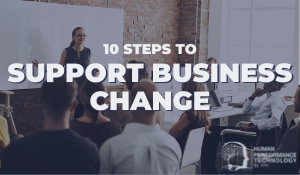The Change Agent’s Role in Creating an Agile Organisation
The traditional enterprise may be deemed hierarchical, sluggish and outdated in the post-pandemic era, but moving to an agile operating model is tough, especially for established large companies. Can organisations really do strategy and execution differently?
Adaptability is fast becoming one of the most important and valuable corporate assets. So it may be no surprise that companies are moving towards agile operating models to more easily adapt to the uncertain environment.
What is agile (lowercase a) versus Agile (uppercase A)
There is a difference between agile organisations and Agile methods:
- Lowercase ‘a’ agile: An agile organisation has a people-centred culture. It aligns to a “north star” or a shared purpose and strategy. A key hallmark of an agile organisation is operating with a network of teams that partake in rapid learning and fast decision making cycles, which are powered by cutting-edge technology.
- Uppercase ‘A’ Agile: Agile is an iterative approach to software development and project management with articulated principles, values, methods, roles, processes and tools. The Agile Manifesto was developed in 2001 and outlines four values and 12 principles that guide Agile efforts.
Agile Organisations
An agile operating model has the ability “to quickly and efficiently reconfigure its strategy, structure, processes, people and technology toward value-creating and value-protecting opportunities” (McKinsey, 2019). This type of adaptability is becoming a critical source of competitive advantage, particularly in our current volatile, uncertain, complex and ambiguous (VUCA) environment.
Who is the Change Agent
Based on global trends, there are a few commonly referenced roles that are being called out as Change Agents; however, a Change Agent can be any individual in a business with the courage and creativity to create a culture that embraces agility and adaptability.
The four groups expected to be Change Agents are professionals in:
- Human Resource and Organisational Development Managers
- Senior and Executive General Managers
- Information Technology Managers
- Project Team Members (including Change Managers and Designers).
An agile transformation will touch all areas of a business, including strategy, people, processes, systems and technology.
The Role of the Change Agent
Below is an example of what each Change Agent could do to create an agile organisation.
- Human Resources and Organisational Development:
- Adapt job descriptions and reporting lines to reflect cross-functional, self-managed teams.
- Introduce and integrate learning and development that is focused on adaptability, change resilience and growth mindset.
- Senior and Executive General Managers:
- Challenge the status quo and lead the shift toward an agile culture.
- Willingly share power, make it safe to voice new ideas, initiate experiments and learning, listen carefully, and continue to scan the future horizons of the business.
- Information Technology Leaders:
- Design and develop a self-serve, searchable internal network for just-in-time information.
- Automate testing and integration processes so that the product team can ensure regular, fast delivery .
- Project, Change and Design Team Members:
- Undertake stakeholder engagement before a solution is defined to co-create the designed outcome. Incorporate users (customers/employees), stakeholders and business leaders in the design.
- Re-imagine the development of business cases to focus on producing a prototype as part of initial seed funding, as opposed to using seed funding to establish a team and write a business case with a multi-year horizon.
- Apply change management interventions that are sustainable (not short-sighted) and integrated into the business for ongoing learning and embedment.
Building an Agile Hybrid Organisation
Remote-working Australians migrated from the cities to regional areas amid the pandemic in search of more space and a lifestyle change, according to population forecaster Andrew Rossiter. About 100,000 additional residents called regional Australia home in 2020, which was 25-50% above the previous recent years.
The agile organisation can support all working models, whether in person, hybrid or fully dispersed. All models require cutting-edge technology, transparency, trust, collaboration and a very clear vision or “north star” to follow.
One thing to call out is that as teams shift frequently in an agile setting, a practiced or proven approach to establishing a new team in a dispersed or hybrid organisation would be very beneficial to making the operating model effective. That may cover onboarding, building relationships and trust, having clear roles and responsibilities, and very capable leadership.
Closing Thoughts
Navigating a business to an agile operating model is not easy. It’s a substantial transformation process and requires investment and support of the new culture and subsequent change. It’s also a mindset shift as well as a fundamentally different strategic approach to running a business. That said, the benefit cannot be understated especially in a world where adaptability, speed and agility mean competitive advantage.

Temre Green, PhD
Head of Consulting Services, Australia & New Zealand. Temre has designed, planned and delivered business strategy and transformation programs that were driven by a range of factors, such as innovation, growth, compliance, regulations, restructures and economic downturns. As an Industrial-Organisational Psychologist, Temre has spent her career dedicated to organisational behaviour and the work environment. She is currently focused on the future of work and multiple areas of organisational development that support organisational growth and health.

.png?width=374&name=Nutshell%20-%208-Step%20Change%20Process%20(John%20Kotter).png)

We Would Like to Hear From You (0 Comments)